15 Best Things to Do in Targu Mures – Travel Guide to Targu Mures
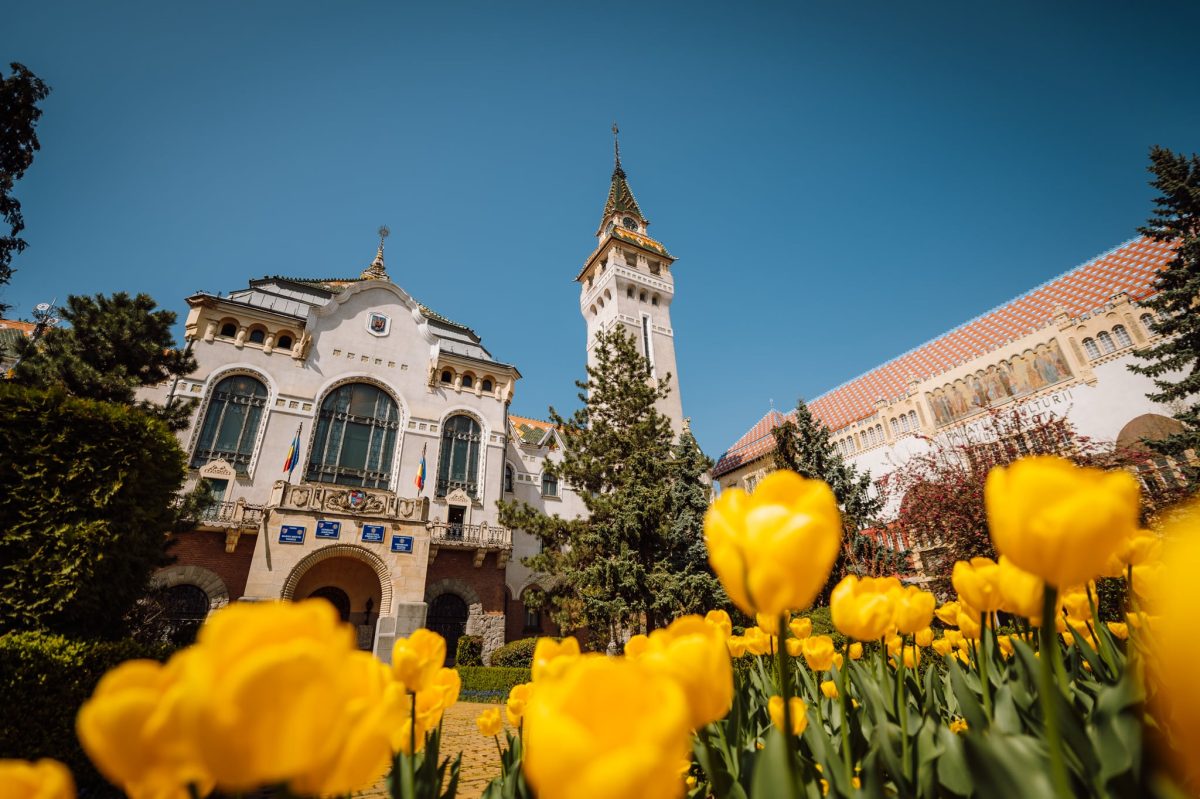
Today let me tell you about my hometown! Targu Mures boasts many attractions you should see. Once it was the capital and cultural center of Seclerland. Located in the middle of Transylvania, the city still has one of the largest Hungarian populations in the area. Targu Mures has a rich history and welcomes you with historical monuments you should see when traveling there. The famous Palace of Culture and The Mirror Hall, with its mesmerizing painted glass windows, are one of a kind. Also, the beautiful art nouveau buildings and impressive monuments all around the city will make you fall in love quickly with Targu Mures for sure. If you are ready to explore my hometown, below you will find the best things to do in Targu Mures Romania! Continue reading and find out what to do in Targu Mures!
What to do in Targu Mures?
This settlement was once called Sekulvasarhel or Székely-Vásárhely and was considered the capital of Seclerland. Today, the city still has the largest Hungarian population in Romania. It is the 16th largest city in the country in terms of total population. The most important period of the city’s development was the Bernády era (the city’s mayor), it lasted from the end of the 19th century to the beginning of the 20th century. This is when the spatial organization and specific image of the city, which has survived to this day, were formed.
During the decades of the mayorship of György Bernády, the main attractions of Targu Mures were built, and the Art Nouveau style also gained space in the decoration of the buildings. The cultural heritage preserved from the old times, the effects of the modern age, and all opportunities regarding entertainment and relaxation quickly made the city a popular tourist destination. If you are not sure where is Targu Mures or you are looking for flights to Tirgu Mures Romania, keep reading and you will find your answers!
Where is Targu Mures located and how to travel there?
So where is Targu Mures located? Thanks to the city’s central location in Transylvania and the developing transportation infrastructure, the city is easily accessible from many European cities. If you feel like going on a little vacation at any time of the year, you can choose from several options. Nowadays, fast transport above the clouds is the most convenient solution. The Targu Mures Transilvania Airport is only 15 km from the city center and an airport transfer is also possible.
The easiest way is to fly from Budapest, as flights to Tirgu Mures Romania from Budapest with WizzAir take less than an hour. But there are also regulated flights to Targu Mures from Dortmund, Memmingen, and London. Tickets to Targu Mures can often be purchased at a favorable, low price. Also, from Budapest, there is a bus that departs to the Transylvanian city every day. Rail transport is a bit time-consuming, especially now that the Romanian railways are being renovated.
Due to the construction of highways, driving by car is also becoming easier. Targu Mures is located 100 km from Cluj, 130 km from Sibiu, 173 km from Brasov, and 510 km from Budapest. It is better to go in the summer season, as many festivals are happening in the area. However, if you plan your trip during the winter season, there are great skiing opportunities you can enjoy!
The short history of Targu Mures
Due to its rich history, Targu Mures and its surroundings offer many attractions to visitors. Archaeologists and historians trace the beginning of its history to the 11th-13th century. What is certain is that the Franciscan monastery was founded in the 1330s and the written source that first mentions the city as Novum Forum Siculorum, i.e. New Székelyvásárhely or Sekulvasarhel, comes from this period.
In 1616, Prince Gábor Bethlen elevated the settlement to the rank of free royal city. As a sign of gratitude, the city named a street after him and in 2020 erected a statue in memory of the prince, which can be admired in the city center. The castle was also built during this period, as the then-ruined monastery could not protect the population.
The development of the city experienced difficult times in the 18th century. Finally, it picked up a bit at the end of the century and after the turn of the century. During this period, the musical well of the legendary handyman Péter Bodor was built. The freshwater well delighted visitors with its music until 1836, then it was demolished in 1911 (a copy made in 1936 can be seen on Margit Island in Budapest).
The biggest structural and demographic changes in the life of the city took place in the period following the Second World War. In 1952, Targu Mures became the center of the Hungarian Autonomous Region, and after its termination, in 1968 it became the center of Maros County. The result of many interethnic conflicts was the Black March of 1990, which stigmatized the lives of the city’s residents for years.
1. Main Square
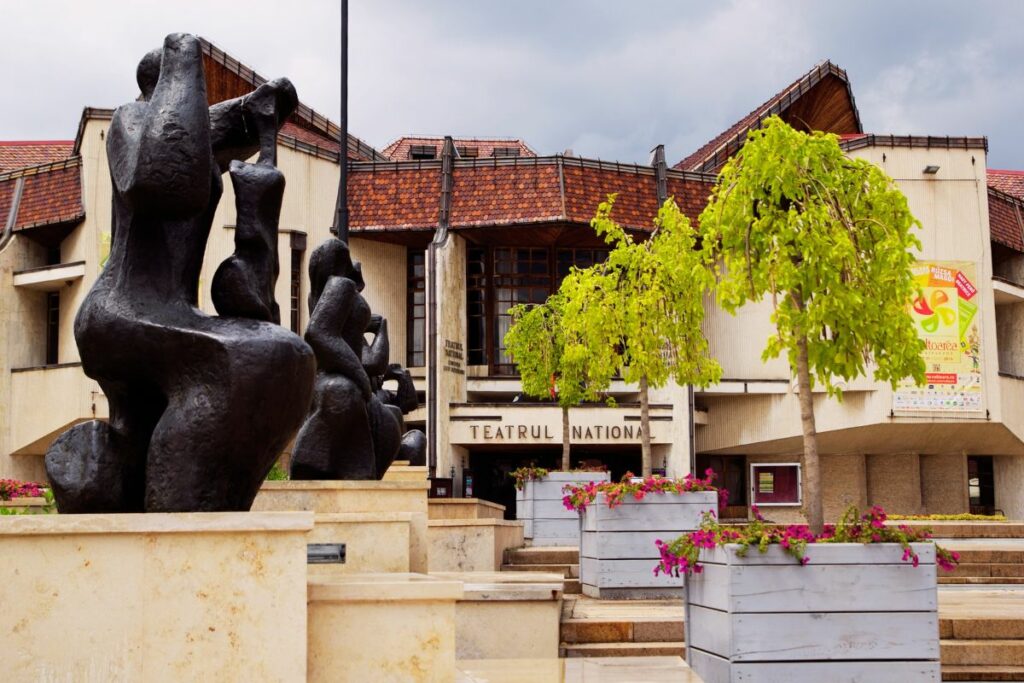
If you are wondering what to do in Targu Mures, start sightseeing from the Main Square, which is also called Rose Square. Theather Square, a public space surrounded by beautiful buildings, also opens from here. The Targu Mures National Theater is one of a kind in Romania. Two theatrical troupes operate here: the Romanian-language Liviu Rebreanu and the Hungarian-language Tompa Miklós troupes.
At the edge of the square stands the tower of the former Franciscan church and monastery, which was demolished during socialism, together with the school operating inside. The tower was saved from destruction only with great difficulty. Next to it, you will find the Museum of Ethnography and Folk Art in the patinated Toldalag Palace, the city’s most beautiful 18th-century baroque building.
The Orthodox Cathedral of the Assumption of Our Lord is located at the northern end of Rose Square, while the Angelic Salvation Orthodox Church is a few meters from the southern end. Between the two, you can also see the monument to the unknown soldier and the equestrian statue of Avram Iancu. In summer, the center of the square is decorated with the Flower Clock with the Hungarian and Romanian names of the city. At Christmas, the Christmas tree is usually set up in the place of the Flower Clock.
2. Targu Mures Palace of Culture
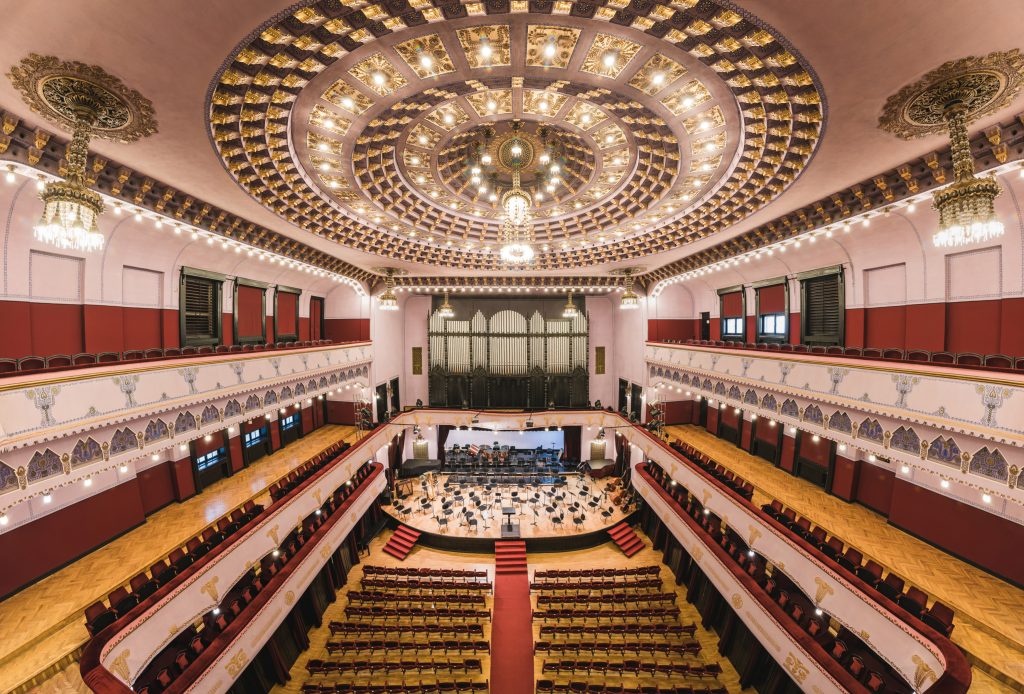
Targu Mures and its surroundings are very rich in terms of attractions, with more and more beautiful landscapes and buildings that enchant visitors. The most famous, which can even be considered the symbol of the city, is the Palace of Culture, one of the gemstones of the Hungarian Art Nouveau buildings. The palace was built in the 20th century by the then mayor, György Bernády.
The exterior facade of the building is decorated with mosaics and sculptures, including the best-known relief, the Homage to Hungary. The lobby is decorated with two frescoes, and the staircases are decorated with colorful stained glass windows. The large concert hall houses one of the largest organs in Europe. The small concert hall can be found on the second floor, and there is a picture gallery with beautiful paintings on the third floor.
And last but not least, the Mirror Hall, the most visited place in the Palace of Culture. At both ends of the room, a huge Venetian mirror is placed, which is connected by a row of stained glass windows. Some of them depict prehistoric scenes as a sign of their Hungarian-Secler origin, while the windows in the middle depict details of Secler folk ballads.
3. Targu Mures Town Hall
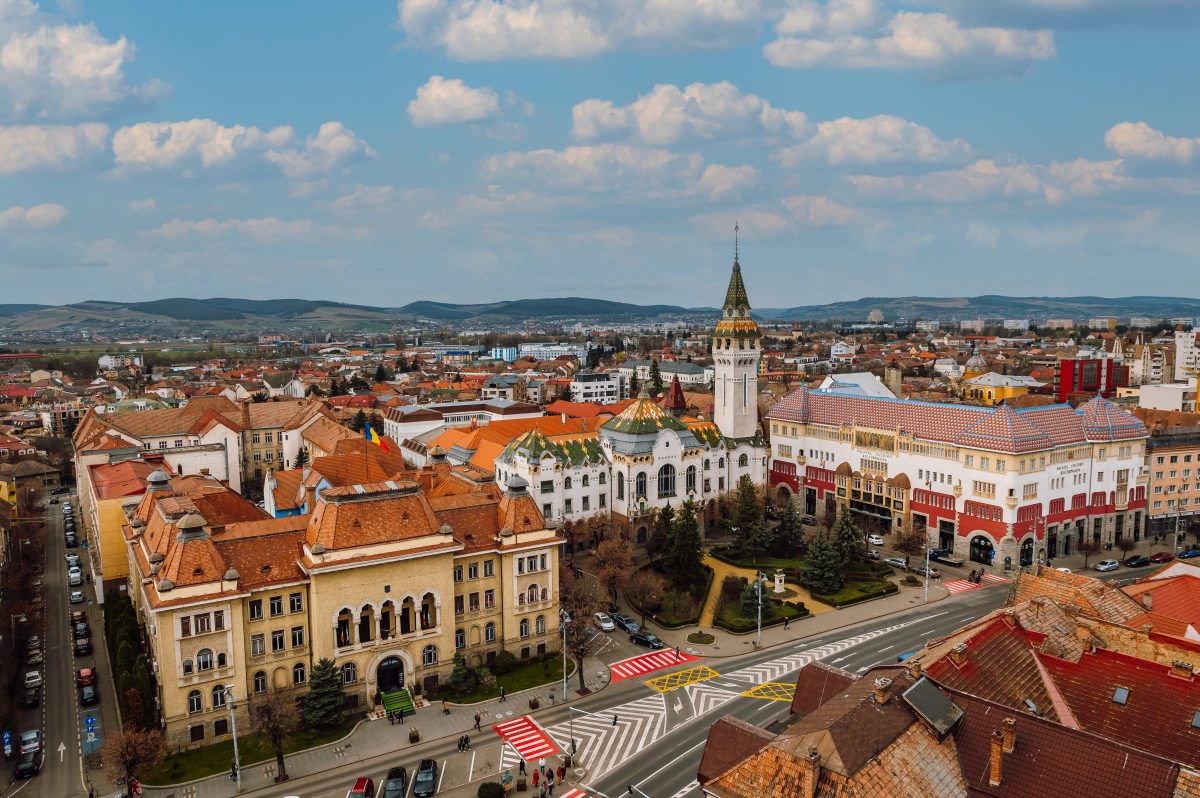
Another special one of the Targu Mures attractions is the Town Hall, one of the iconic symbols of the city. It was built at the beginning of the 20th century, a few years before the aforementioned Palace of Culture. Both buildings represent the stylistic direction of the Hungarian Art Nouveau, creating a wonderful unity even today. The construction of both was won by the famous architect duo from Budapest, Marcell Komor and Dezső Jakab.
Following consultations with Mayor György Bernády, the plans were changed, so the tower planned for the center ended up on the corner, breaking the symmetry of the facade. It has a baroque spatial structure, and its decoration mixes the Art Nouveau style with historicizing solutions. All this is crowned by the Zsolnay ceramics brought from the city of Pécs. Just look up at the building and you will get lost in the beautiful details.
After the World War, Transylvania came under Romanian rule, at which time the large Hungarian coat of arms and colorfully decorated windows were removed, and during communism, the structure of the building changed as well. Today, the local government operates the place, and it is not open to tourists. However, you can climb up to the 60-meter-high tower. If you have the time, it’s worth taking the opportunity!
4. Targu Mures Fortress Church
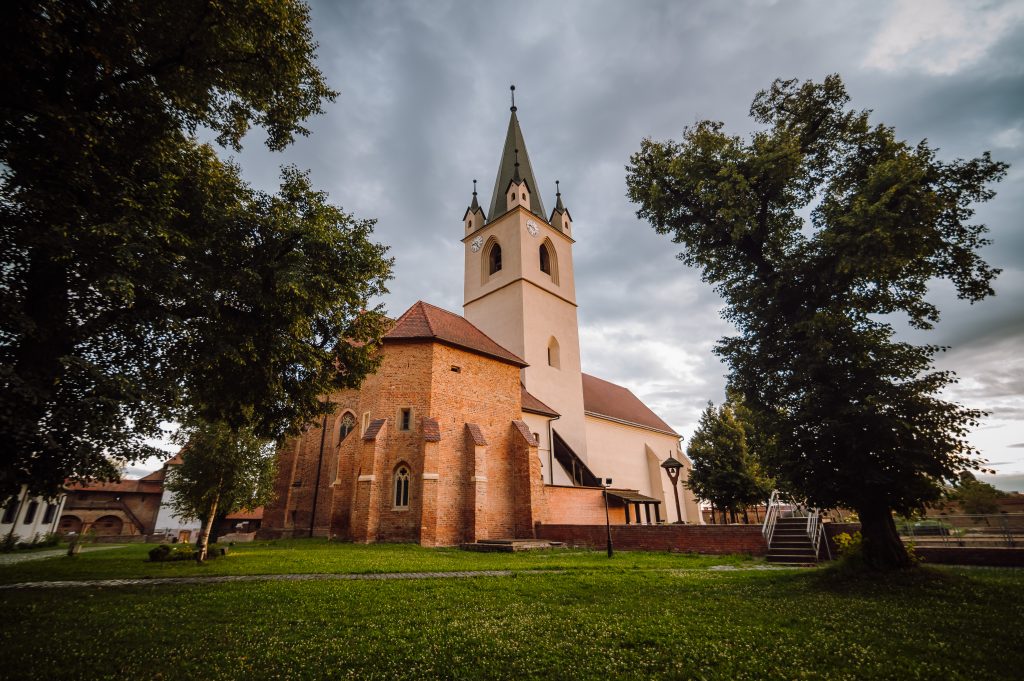
If you still wonder what to do in Targu Mures, head to the Fortress Church. In the 14th century, there was a Franciscan monastery in the city. After the 17th-century siege, the buildings only partially survived. The ruins were slowly demolished and its bricks were used to build the city wall. The church also suffered considerable damage, but it was renovated by the end of the century thanks to the rich donation of Mihály Teleki. Then it got a new coffered ceiling, and they saved two old signs.
The Fortress Church is one of the most significant late Gothic buildings in Targu Mures and Seclerland. During the second part of the 18th century, the Fortress Church was renovated. The church’s interior acquired its present form, the nave was decorated in the Baroque style, and the organ was also replaced in this period. Nowadays, it is one of the rare churches with two pipe organs.
What makes this Reformed church special is that Ferenc Rákóczi the 2nd chose the Fortress Church as the venue for his election as prince, and no fewer than 37 parliaments were held here. The church tower already had a clock in the 1600s. From the 19th century, the ringing of a bell signaled the passage of time. The walls of the church are decorated from the inside with coats of arms made by a local artist.
5. Schools: Marosvásárhelyi Református Kollégium – Bolyai Farkas Elméleti Liceum
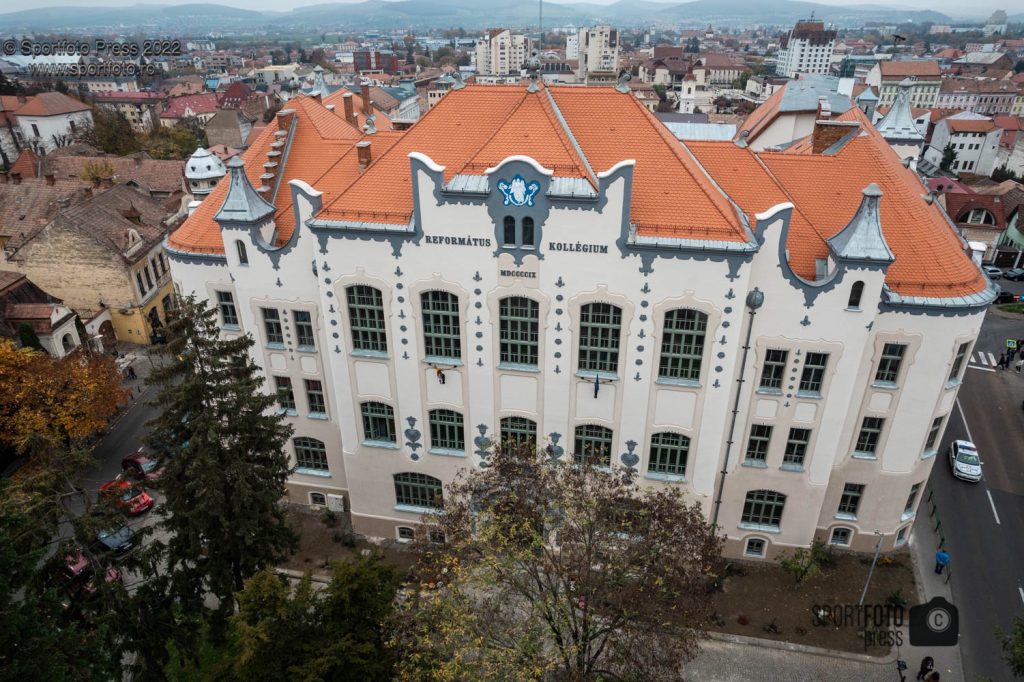
The founding of the Reformed College (Református Kollégium) dates back to the 16th century. Back then the Schola Particula was located in the area of the Castle Church. Farkas Bolyai, the famous Hungarian mathematician also taught here. On the 100th anniversary of his death, as part of a celebration of his life, it was announced that the school would take on the name of its most famous teacher. At the turn of the millennium, great emphasis was again placed on church education. This is when the Reformed College became a separate institution from Bolyai Farkas Elméleti Líceum.
When it comes to the sights of Targu Mures, the two Bolyai statues, the square, and the school named after them cannot be left out. The statue of its most famous professor, Farkas Bolyai, and its most famous student, János Bolyai, were given a worthy place in the square next to the school. I would also like to note that György Bernády, the twice-elected mayor of the city, also studied at this institution.
The school moved to its current location at the beginning of the 17th century, where it still operates. In the 19th century, a two-story boarding house was added to the school building and then another two-story wing was attached to it, which was later demolished. The main building that can still be seen today was built by György Bernády as mayor. The Art Nouveau building now houses both Hungarian-language educational institutions.
6. Targu Mures Fortress
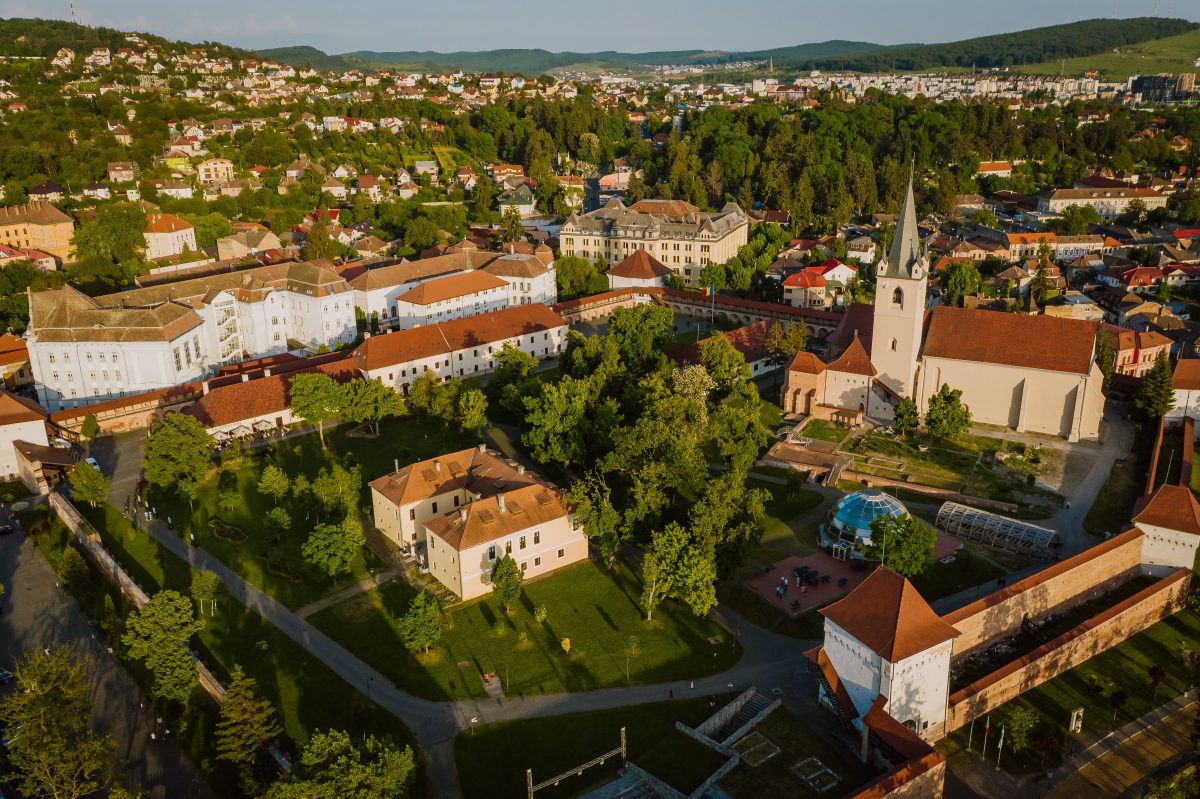
Another well-known attraction in Targu Mures is the Fortress. Unlike usual, one of the largest forts in Transylvania is located in the city center. Its present-day image, which reminds the visitors of the 17th century, was created in the second half of the 20th century during restoration works. The previously presented Fortress Church also belongs to this complex.
István Báthory, leader of Transylvania in the 15th century built the fortress around the church at the end of the century, which was destroyed a century later. Thanks to the cooperation of Tamás Borsos, the city judge with the population the fortress was reconstructed. At that time, the seven bastions were established: Gate Bastion, Tailor’s Bastion, Butcher’s Bastion, Cooper Bastion, Furrier’s Bastion, Locksmith’s Bastion, and Tanner’s Bastion, which were maintained by the local guilds.
In 2012, with the support of the European Union, they started major renovation works, which can be seen today. A completely modern building welcomes visitors now. The Fortress’ courtyard houses many cultural events. Also, there is a museum you can visit. Oh, and even an archery competition called The Fortress’ Best Archer is organized every year.
7. Teleki Téka
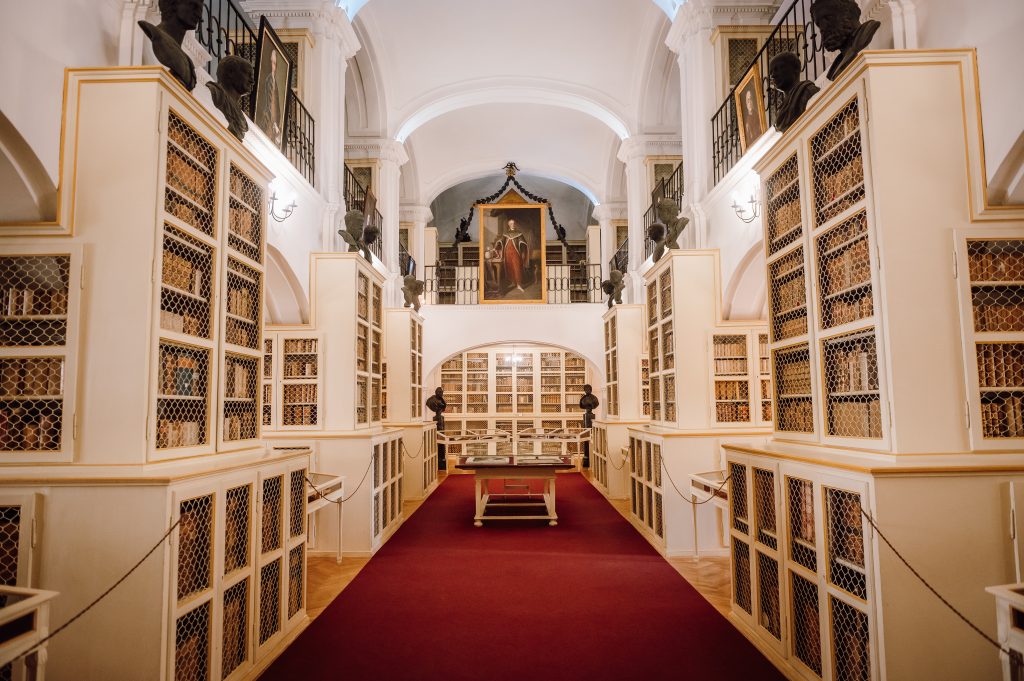
What to do in Targu Mures Teleki if you are interested in old books? Well, the Téka includes several institutions: on the one hand, the Teleki-Bolyai Library, which has one of the richest book collections in Transylvania, and on the other hand, the Bolyai Museum. The building dates back to the 16-18th century. It was built in Baroque style. At the end of the 18th century, Sámuel Teleki, the founder of the library, added a new wing to the house which he inherited from the Wesselényi family. Today, his library here can still be seen in its original layout.
The Teleki-Bolyai Library includes two large book collections. Teleki Téka is also the keeper of bibliophile rarities. Sámuel Teleki’s collection includes about forty thousand volumes, and his wife’s books also received a special section. The Bolyai Library has a larger collection, including books from defunct religious schools and other institutions, as well as donations from private collections.
Targu Mures is also called the city of the Bolyai family, so it was essential to create a museum in memory of these two famous people. This happened at the beginning of the 20th century. The tangible memories of Farkas Bolyai and János Bolyai, as well as a prominent part of the written legacies of the two scientists, can also be viewed here. Also, the skull of Bolyai Farkas and a part of his son’s skull are exhibited in the building.
8. Roman Catholic Church
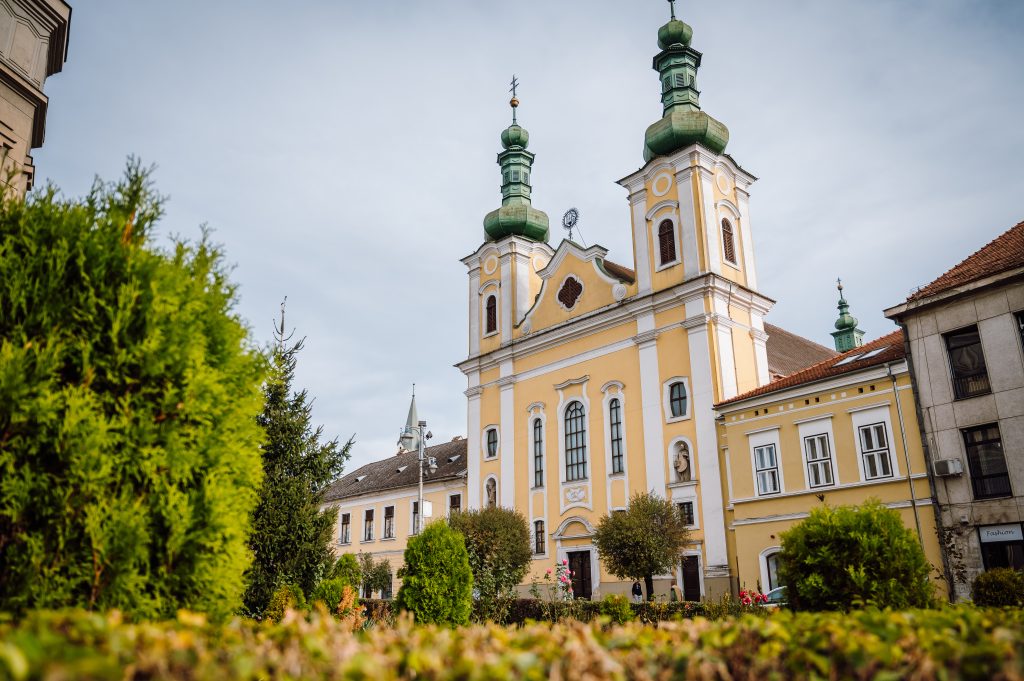
The Catholic community in Targu Mures dates back to the 14th century, but the Reformation had a negative effect on the religion. During this period, the Catholic Church was on the verge of extinction. In the Middle Ages, it was a cloister of Franciscan nuns, but with the spread of the Reformation, only the Fortress Church was used in the city, and Catholic religious practice was prohibited.
In the 18th century, the Catholic religion started to rise again thanks to the settlement of the Jesuits. At that time, the chapel was built, in which II. Ferenc Rákóczi took the princely oath. Today’s parish church was built during that century, and the beautiful main altar and pulpit were also completed at that time. The stained glass windows are from the 19th century. A few years later, ceiling paintings were also added to the vaults of the church.
In the 1970s, a universal building with the cantor’s apartment was built on the east side of the parish, which was later expanded with a classroom for religious education. The Deus Providebit youth center was established in the courtyard of the parish of St. John the Baptist before the turn of the millennium. The Study House serves the interests of Hungarian-language higher education and hosts various Hungarian cultural events.
9. Teleki-House – Bernády Statue
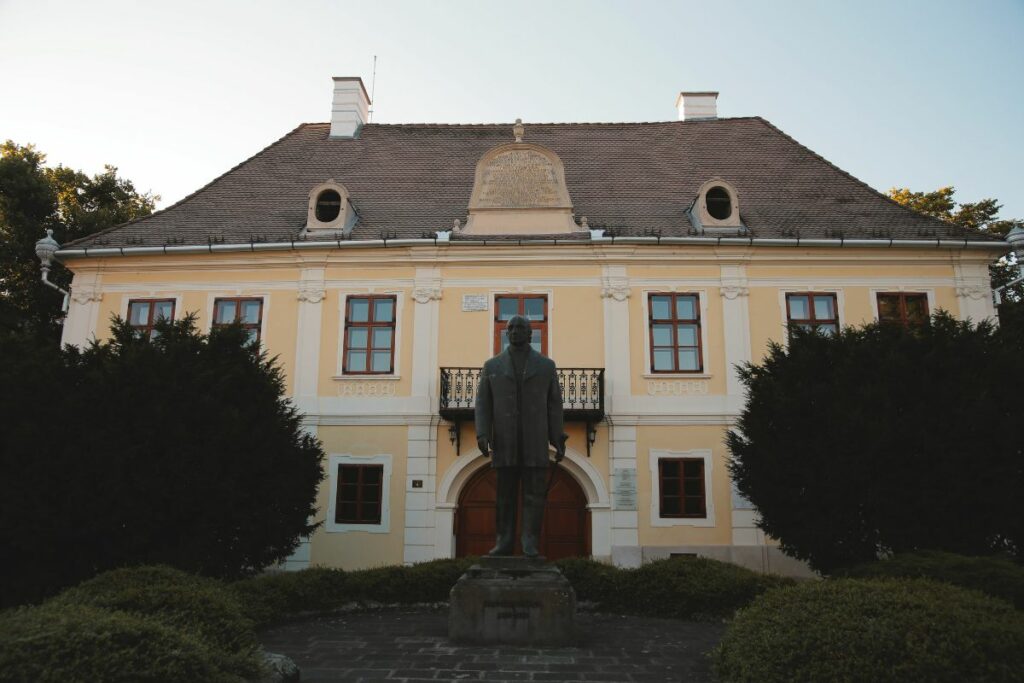
Among the attractions of Targu Mures, we have already listed several buildings that we owe to György Bernády. At this point, it is time to take a look at the mayor’s statue, which is located in the square named after him, on the northeastern edge of the Main Square. Behind it stands the Teleki House, which was owned by Domokos Teleki, who built it in the early 1800s.
The famous Teleki House was General Bem’s headquarters in January 1849. After the revolution, it was the residence of cavalry captain József Eperjesi, the first chief commissioner of the imperial district. In the 20th century, the building underwent several monumental changes. Its western wing, which was previously demolished, was rebuilt and renovated by the Reformed Church. In contemporary footage, there were still doors on both sides of the gate instead of windows.
On the square in front of Teleki House, on Bernády Square below the Fortress, you can see a full-length bronze statue of György Bernády. This was erected in 1944 in memory of the mayor. Vince Bocskay’s work fills a gap, as there were few city leaders like Bernády. He initiated the rapid development of the city at the beginning of the century, and most monuments that have survived to this day are connected to his name.
10. Synagogue
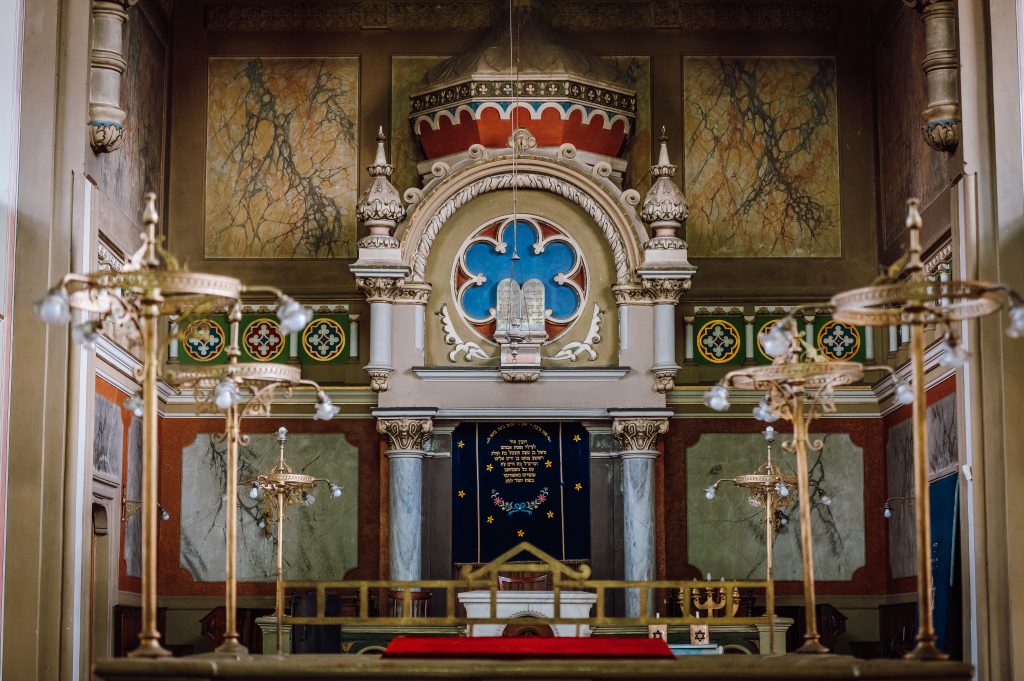
Let’s continue our list of attractions that make Targu Mures one of the best towns in Transylvania. The synagogue is located on Aurel Filimon Street, which runs parallel to the main road of the city center. The first synagogue of the Jewish community was built in the middle of the 19th century. It was demolished a decade and a half later. Their church, which still exists today, was built at the end of the century based on the plans of the Viennese architect Iacob Gartner.
This attraction is one of the largest synagogues in Transylvania, besides the town of Gyergyószentmiklós. It is a Jewish church that is still operating today. The monumental building has three domes and in its interior you will find beautiful decorative elements. Its red, blue, and green windows suggest a cheerful atmosphere. The large rose windows, the two onion-helmet towers, and the octagonal dome, also with rose windows, evoke the Eastern world.
In the middle of the synagogue, you will find a bimah, flanked by four light fixtures, which is typical of Orthodox synagogues. Here happens the reading of the five books of Moses, the Torah. You can visit building according to opening hours, and you can ask for a guided tour. If your journey takes you there, it is also worth visiting the Jewish museum, which is located in the same place.
11. Hospitals and the Memorial of the 13 Secler Martyrs
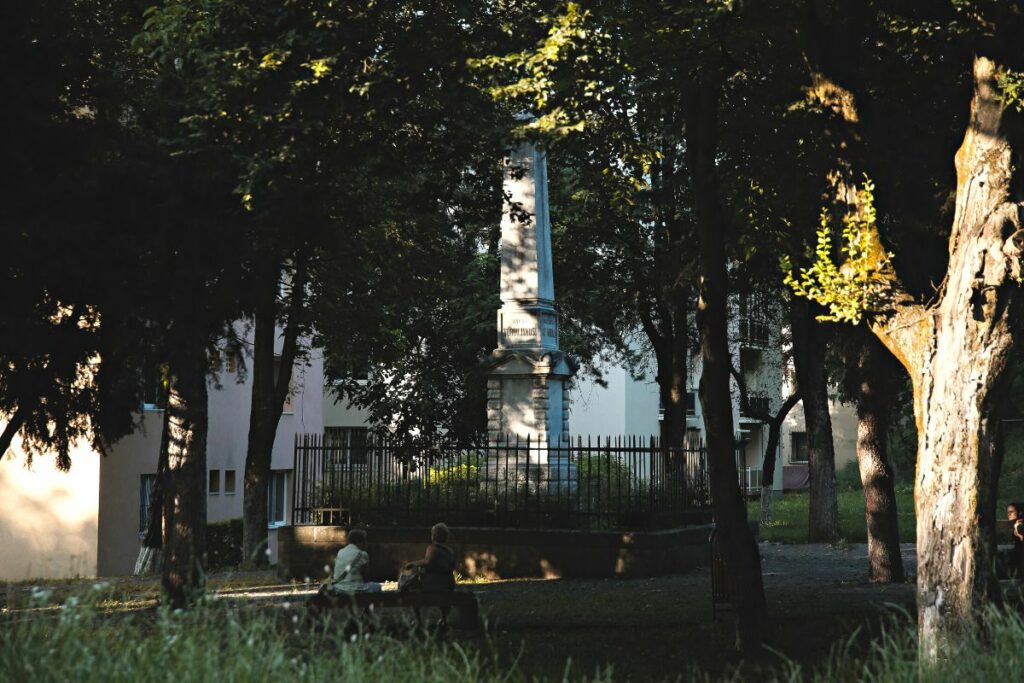
Undoubtedly, the attractions on the Main Square are fantastic, but we now let’s move a little further away. Honestly, it is difficult to choose only a few among the multitude of attractions to present here. Being a history major, I consider it important to also mention the Secler Martyrs’ Memorial. Here people hold a commemoration every year in memory of the famous 13 Martyrs of Arad and their fight for freedom.
Postaret, the square that houses the obelisk decorated with lions, is only 1.5 km from the center. The memorial site, inaugurated in 1875, commemorates the three Secler martyrs executed in 1854. Namely: János Török, Károly Horváth and Mihály Gálfi. Every year since the Black March of 1990, the city’s Hungarians gather at this place on March 15 to remember them.
From the Postaret, you can go up to the Clinics district via a small, winding, cobbled road. In addition to the Mures County hospital and the emergency department (also known as SMURD. There are many specialist clinics in this area, including the Mures County Blood Center. Moreover, I should mention that the building complex of the University of Medicine and Pharmacy is also located here.
12. Weekend
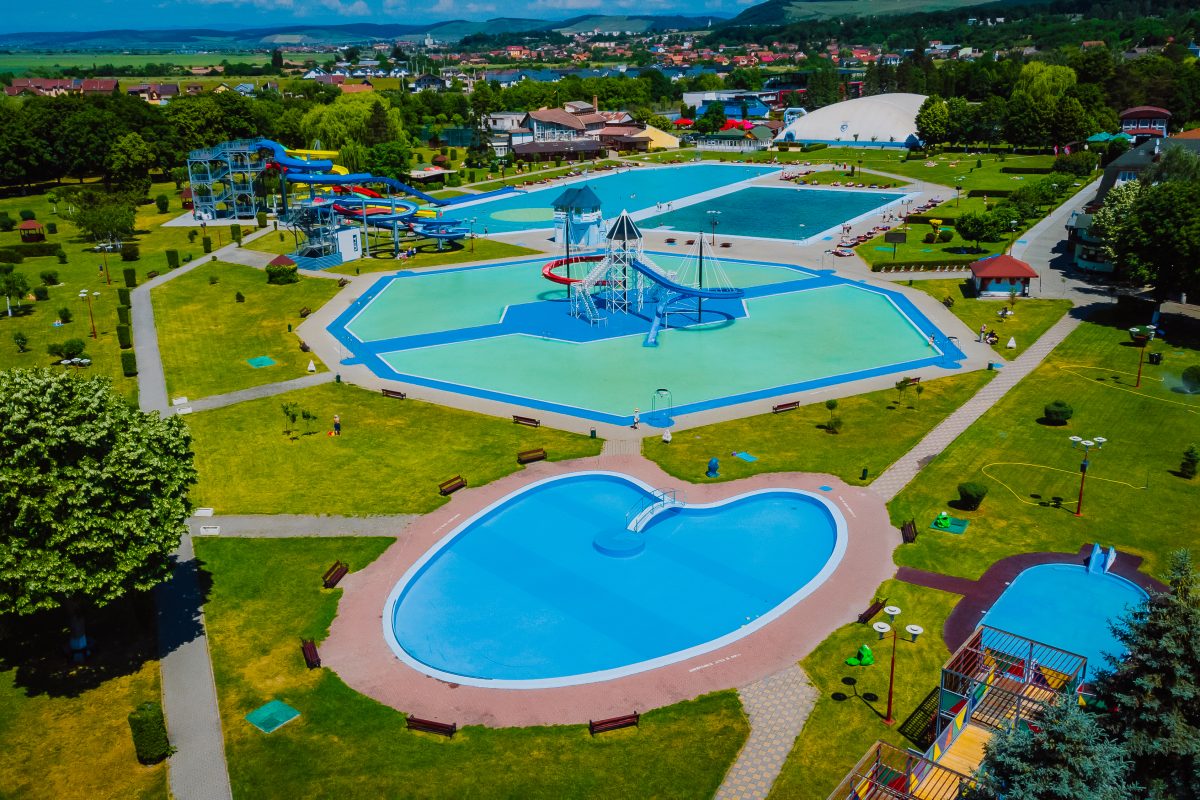
What to do in Targu Mures during the summer? While exploring cultural programs and attractions, you must not forget to relax either! The Mures Leisure and Sports Center, better known as Weekend, offers the perfect opportunity to relax during the summer season. The city established this water park in the 1930s, on a backwater of the river Mures. In the 1960s, they built sports fields, swimming pools, and restaurants on the estate.
At the turn of the millennium, the maintenance of the holiday park was neglected, so its popularity also declined. The bars and clubs operating here attracted young people and kept the possibility of partying and entertainment alive. At the beginning of the 2000s, spectacular and large-scale renovations took place. As a result Weekend is now one of the most visited water parks in Transylvania.
Currently, during the summer season, there are seven open swimming and bathing pools on the site, with three water slides. In addition to these, an indoor Olympic pool, sports courts (football, volleyball, basketball, foot tennis), restaurants, and garden areas await visitors. You can also go boating on the Mures backwater. You can visit the park out of season. However, the go-kart track only operates in the summer season.
13. Zoo

Why is Targu Mures the best towns in Transylvania to visit with children? Well, here’s why. Another amazing attraction in the city is the zoo and the renovated park around it. It is located on a hill rising above the town. After construction and modernization, it became one of the most modern leisure parks in Transylvania. They created a playground for the children and a green area suitable for picnics. Also, the small railway entertaining families was also restarted. In addition, the Zoo and the “Forest Cottage” (Erdei házikó) welcomes its visitors with many animals.
The small train transports both young and old within the area. They modernized the railway in 2009. At that time it received a new name: yes, you have guest it, Thomas train. Its route is about 800 meters, through the forest. The “Forest Cottage” is actually a restaurant and cafe where guests can enjoy products made from natural ingredients since 2011.
Last but not least, the zoo founded in the 60s, surrounded by oak and cherry forest, which provides a perfect living space for various animal species. Modernization and expansion is still happening, and more and more projects are being launched. 40 hectares were added to the base area to create a more suitable living space for elephants and giraffes.
14. Bürger House – Aranykakas Restaurant
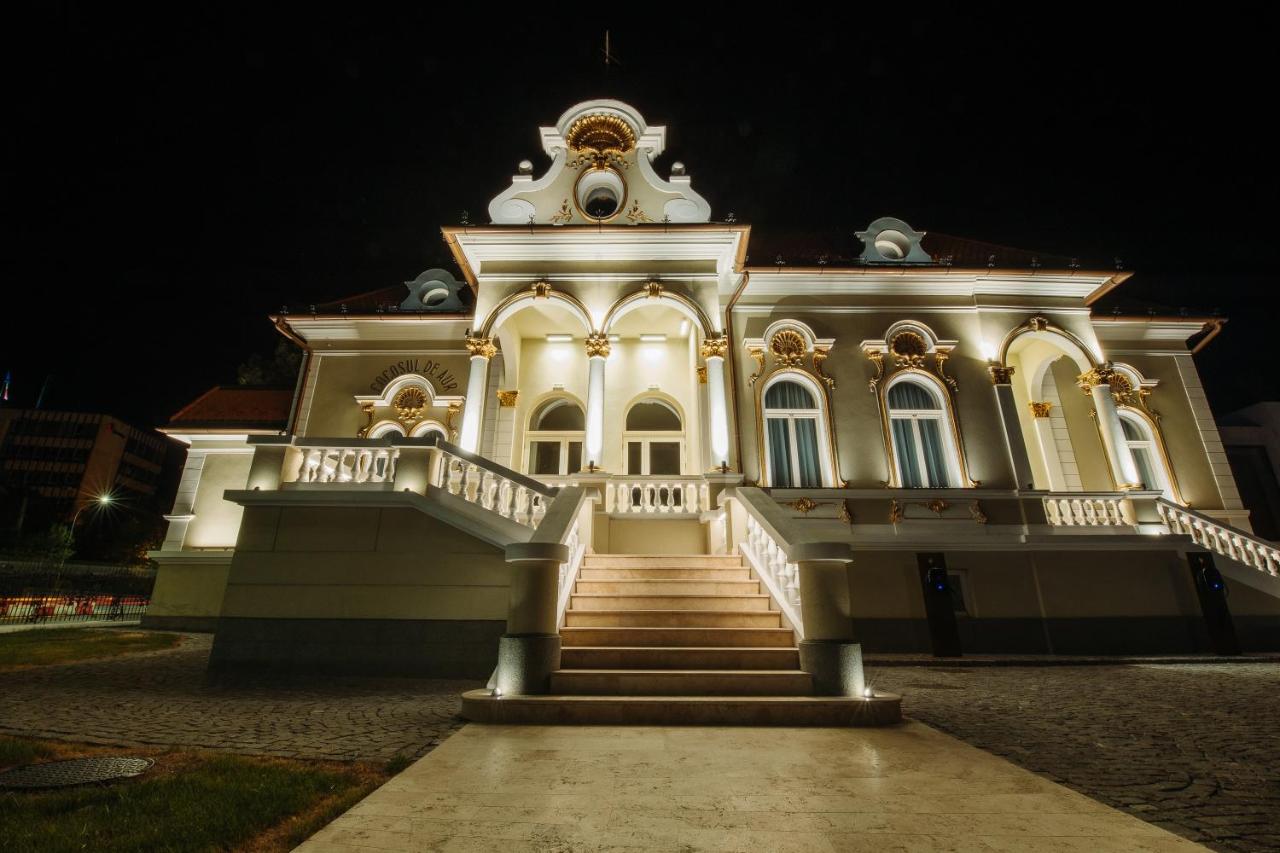
Targu Mures is one of the best towns in Transylvania, and the next place proves it for sure. For a long time, the popular restaurant and nightclub, known as Aranykakas or Golden Rooster, has been missing from the list of the city’s attractions. The Bürger house, which we are talking about, was built in the 19th century by one of the town’s most powerful entrepreneurs, Albert Bürger. This apartment building was the corner building of the brewery operating on the outskirts of the city at the time.
The neo-baroque palace with Art Nouveau style became state property after the Second World War and was later used as a warehouse. In the 70s, it became a restaurant, called Aranykakas, which was operated by the Avicola poultry company. It was closed in the 90s and its new owner stopped spending on it, and as a result, its maintenance was neglected.
The ruined building was one of the main venues for a local cultural festival, the Vásárhelyi Forgatag. The residents of the city constantly raised their voices in favor of the building’s renovation. Finally, in 2005 the building was sold to a new owner, who invested money in it and restored it with help from experts. In May 2022 it opened its doors to guests again, expanding the list of Targu Mures restaurants.
15. Privo Hotel
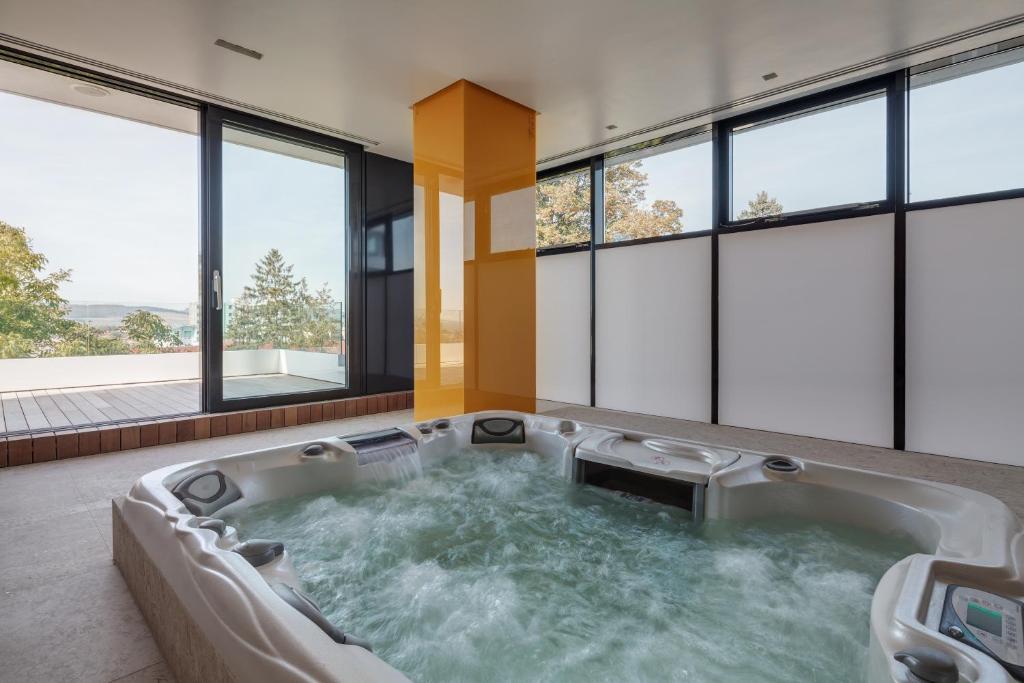
One day in Targu Mures is not enough to visit the most important attractions and places. Luckily, the city does not suffer from a lack of accommodation so that you can spend several days in and around the city. Usually, comfortable relaxation and high-quality hospitality are the main considerations for the visitor so I can recommend the Privo Hotel near the Main Square with all my heart.
Hotel Privo is a four-star hotel located only a few hundred meters from the main attractions and center of the city, 1 km from the main railway station, and only 15 km from the airport. The hotel has a wellness center, sauna, and jacuzzi. We checked the Booking, the previous guests rated the accommodation 9.1 points.
Hotel Privo and Csonka Villa together form the Privo Complex in a quiet green area of the city. It can accommodate more than a hundred people in total in its beautiful luxury apartments. The Csonka Villa is one of the special, more than 100-year-old Art Nouveau buildings of the settlement. During the renovation of the building the original design was preserved and later furnished in an authentic spirit. So the key answer to the question of what to do in Targu Mures is to stay for a couple of days!
Wrapping up: what to do in Targu Mures
At this point I am sure you agree that my hometown is very rich in things to see and do. Also, you surely have the answers now to the big question of what to do in Targu Mures. The Palace of Culture building, the Fortress and the Fortress Church are only the top of the iceberg when it comes to exploring many beautiful sights of this charming Transylvanian town. I really do hope that the places I mentioned above, the tourist attractions and the things you can do caught your attention.
In Targu Mures you will find everything to spend a memorable vacation. Do you want to relax or have fun? You find both in this city! We have also compiled a list of the best Transylvanian accommodations. So in case you want to explore further, we really do recommend you to visit these places. Whatever you’re in the mood for, we look forward to welcoming you to Targu Mures!
Check out our guide for Sighisoara things to do!
Pin: Targu Mures things to do
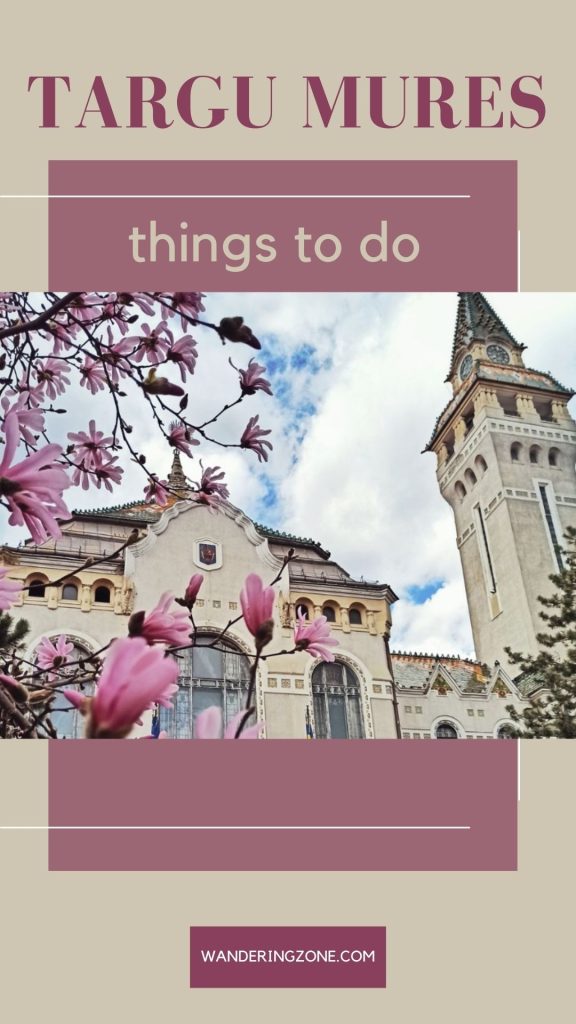
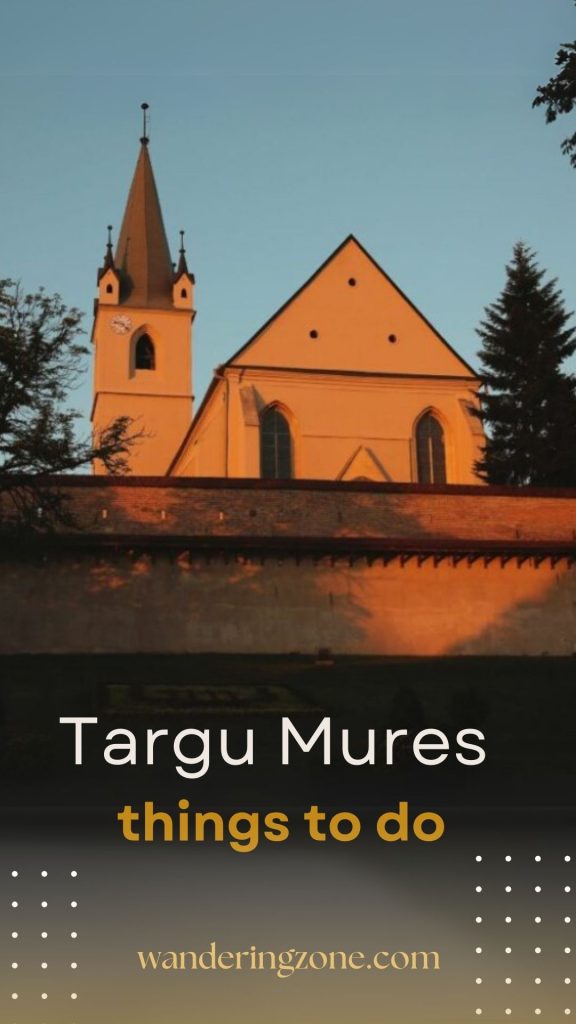
Related Posts
15 Beautiful Palaces in Hungary – Hungarian Palaces
One of the most prominent proofs of Hungary’s rich history are the castles…
March 14, 202515 Most Beautiful Castles in Hungary – Hungarian Castles
Hungarian castles are like timeless guardians of history, sharing captivating tales of the past with…
February 28, 2025© 2021 Wandering Zone. All rights reverved - Site run by MIRA Digital
You cannot copy content of this page


